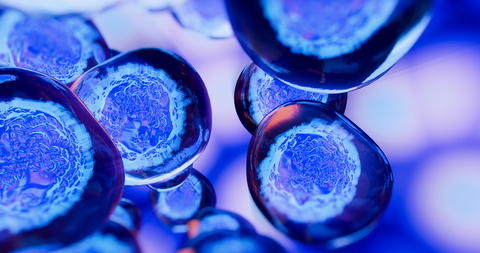LOUISVILLE, Colo.– Sierra Space, a leading, pureplay commercial space company building the first end-to-end business and technology platform in space, today announced it has developed a pathfinder spaceflight investigation in collaboration with BioServe Space Technologies (at the University of Colorado Boulder) and other partners to grow hematopoietic stem cells in microgravity to better help patients on Earth undergoing treatment for blood cancer.
The experiment – which is also being designed by researchers from the Mayo Clinic (Jacksonville, Fla.) and ClinImmune (University of Colorado Medical Campus) – is on its way to the International Space Station (ISS) as part of Northrop Grumman’s 19th Commercial Resupply Services mission, which launched Aug. 1 at 8:31 p.m. Eastern. The NG-19 mission includes more than 20 ISS National Lab-sponsored payloads. To learn more about all ISS National Lab-sponsored research on this mission, please visit the ISS National Lab launch page.
Chemotherapy is a common treatment that targets cancer cells, but can also destroy healthy cells in the process, which could lead to life-threatening complications. To avoid this, doctors can take hematopoietic stem cells from a healthy donor’s bone marrow or blood and transplant them into a matched recipient. Hematopoietic stem cells can also be obtained from donated umbilical cord blood, which are closer in nature to embryonic stem cells and offer a lower risk of complication.
However, stem cell transplants require large numbers of cells to be effective, and it is challenging to grow cord blood stem cells to produce enough for effective treatment. When grown on Earth, hematopoietic stem cells normally change into dedicated blood cell lines, which is not optimal for patient recovery.
“Approximately every nine minutes, a family loses a loved one to leukemia, lymphoma or myeloma. If we can mass-produce hematopoietic stem cells by using the unique microgravity environment of space, I think about the transformational impact we will have on patients and their families,” said Sierra Space CEO Tom Vice. “This experiment, to see if we can grow hematopoietic stem cells in space in larger quantities, is a precursor to what Sierra Space one day envisages – orbiting microgravity factories that enable the next breakthroughs in human health care that will have a profound impact on the quality and longevity of millions of people here on Earth. Microgravity, the next foundational tech, will lead to the most amazing Industrial Revolution in history.”
For the in-space experiment, Sierra Space, BioServe and the study team sent stem cell samples from multiple umbilical cord blood donors to look for beneficial differences during the cell growth experiment. The stem cell samples will be frozen at different time points while in orbit and sent back to Earth for analysis.
This pathfinder study is part of a larger project led by BioServe to develop a stem cell expansion bioreactor for use in low-Earth orbit (LEO) for eventual cellular therapeutic manufacturing in-space. Future flight investigations are being planned with the project partners to demonstrate the potential for in-space production.
Sierra Space is developing LEO infrastructure capabilities ─ such as the Dream Chaser spaceplane and the LIFE (Large Integrated Flexible Environment) Habitat ─ that will support commercial, in-space and cellular therapeutic manufacturing.


